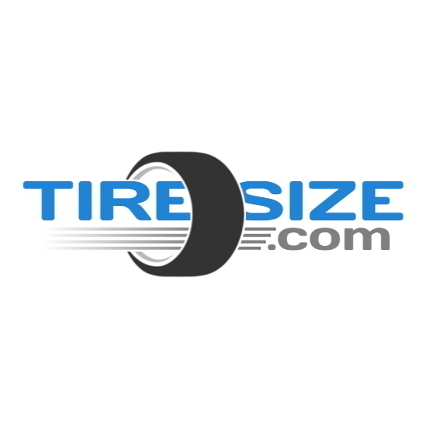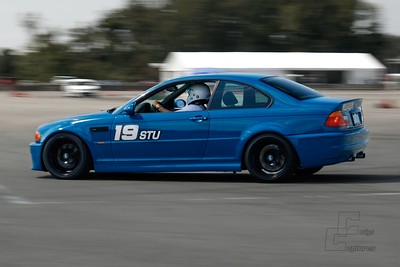You can play with tire sizes to your heart's content here: http://www.miata.net/garage/tirecalc.html
Quote Obioban:
Everything in this thread is aimed for optimal. There are lots of things you can do that are not listed here. I'm well aware that some people love the look of 11" wheels and have made it fit, and claim no decrease in handling, ride quality, etc. Congrats. This thread will focus on the best possible setups from a functional perspective, and you can vary it however you want from there.
This first post is not about fitment. Just because I list a setup as matched DOES NOT MEAN IT WILL FIT ON YOUR WHEELS OR IN YOUR FENDERS.
I'm going to attempt to lay down some basics for tire sizing on this car. This thread is going to be geared mostly towards street use, where DSC interference matters.
Okay, ground rule: You want the front and rear tire to have, as close as possible, the same rolling diameter. DSC works by comparing the rotational speeds of the various tires. If your rear tires have a smaller rolling diameter than the car expects, and the fronts are the same, the DSC will think at all times that you are having slight wheel spin (as the rears are rotating faster than the fronts). If the system is predisposed to thinking that you have slight spin, then it's much more prone to intervening-- it'll take much less to set off the DSC. That makes for unfun driving dynamics.
Before going any further, I think we should make everyone has an understanding of what tires sizes actually mean, as it's not as intuitive as you might thing. I'm bolding the middle part on profile, as that's the key part to all of this and the most misunderstood:
Take away: If you go with a wider tire, you need to run a smaller profile percentage to have the sidewall (and circumference with it) not become larger.
Okay, moving on:
The stock M3 tires sizes are
225/45/18, circumference: 81.6"
and
255/40/18, circumference: 81.8"
or
225/40/19, circumference: 82.0"
and
255/35/19, circumference: 81.8"
Notice how the circumference is nearly identical in stock spec. The closer you keep to that ratio, the less DSC interference you'll have. The numbers are close enough that for ease of use I just stick to 1:1.
Okay, so let's expand upon this. Most of us don't want to be running the stock setup as 225 is pretty small and understeery. So, what options does that leave us? Well, two categories: staggered (30mm) or square.
Staggered pairs that work well together:
18":
225/45/18, circumference: 81.6"
and
255/40/18, circumference: 81.8"
235/40/18, circumference: 79.8"
and
265/35/18, circumference: 79.5"
245/40/18, circumference: 80.8"
and
275/35/18, circumference: 80.4"
255/40/18, circumference: 81.8"
and
285/35/18, circumference: 81.2"
255/40/18, circumference: 81.8"
and
295/35/18, circumference: 82.1"
19":
225/40/19, circumference: 82.0"
and
255/35/19, circumference: 81.8"
235/35/19, circumference: 80.0"
and
265/30/19, circumference: 79.4"
245/35/19, circumference: 80.9"
and
275/30/19, circumference: 80.1"
245/35/19, circumference: 80.9"
and
285/30/19, circumference: 80.8"
255/35/19, circumference: 81.8"
and
285/30/19, circumference: 80.8"
Square setups that work:
225/45/18, circumference: 81.6"
235/40/18, circumference: 79.8"
245/40/18, circumference: 80.8"
255/40/18, circumference: 81.8"
265/35/18, circumference: 79.5"
275/35/18, circumference: 80.4"
285/35/18, circumference: 81.2"
One final note: For the purposes of DSC, all that matters is that the front and rear have nearly the same circumference. That said, as you get further away from the stock 81.7", the speedo will read faster and faster at the same speed (and the speedo comes about 5% fast from the factory, so you're just making a bad situation worse).
Quote Obioban:
Everything in this thread is aimed for optimal. There are lots of things you can do that are not listed here. I'm well aware that some people love the look of 11" wheels and have made it fit, and claim no decrease in handling, ride quality, etc. Congrats. This thread will focus on the best possible setups from a functional perspective, and you can vary it however you want from there.
This first post is not about fitment. Just because I list a setup as matched DOES NOT MEAN IT WILL FIT ON YOUR WHEELS OR IN YOUR FENDERS.
I'm going to attempt to lay down some basics for tire sizing on this car. This thread is going to be geared mostly towards street use, where DSC interference matters.
Okay, ground rule: You want the front and rear tire to have, as close as possible, the same rolling diameter. DSC works by comparing the rotational speeds of the various tires. If your rear tires have a smaller rolling diameter than the car expects, and the fronts are the same, the DSC will think at all times that you are having slight wheel spin (as the rears are rotating faster than the fronts). If the system is predisposed to thinking that you have slight spin, then it's much more prone to intervening-- it'll take much less to set off the DSC. That makes for unfun driving dynamics.
Before going any further, I think we should make everyone has an understanding of what tires sizes actually mean, as it's not as intuitive as you might thing. I'm bolding the middle part on profile, as that's the key part to all of this and the most misunderstood:
On the side of every tire is a host of numbers and ratings that describe the tire and its performance characteristics. A typical tire size numbering system will appear as a string of letters and numbers, such as this example: 215/70R16
215/70R16
The numbers before the slash (/) indicates the section width of the tire; the widest point from sidewall-to-sidewall. The larger this number, the wider the tire. This number is the wide of the tire in millimeters. In this example, the tire has a 215-millimeter section width.
215/70R16
The next number trailing the slash (/) indicates the height of the tire in a percentage of the section width. In our example, the number is 70, which means the tire height is 70% of the section width, which is 215 millimeters. The height of this tire would be 150.5 millimeters. The lower the number is, the lower the profile of the tire.
215/70R16
The next letter is reveals the construction of the tire. The most common is “R” such as found in our example. The “R” designation states the tire is of radial construction. Other construction types are rarer for modern passenger car use, and may include “D” for bias ply construction and “B” for belted tires.
215/70R16
The number following the construction code is the size of the wheel in inches. The example tire would be designed to fit a 16-inch wheel. Tire sizes on modern vehicles typically start at 13-inches and go up to 18-inches, but aftermarket and special package wheels can be 22-inches or even larger.
215/70R16
The numbers before the slash (/) indicates the section width of the tire; the widest point from sidewall-to-sidewall. The larger this number, the wider the tire. This number is the wide of the tire in millimeters. In this example, the tire has a 215-millimeter section width.
215/70R16
The next number trailing the slash (/) indicates the height of the tire in a percentage of the section width. In our example, the number is 70, which means the tire height is 70% of the section width, which is 215 millimeters. The height of this tire would be 150.5 millimeters. The lower the number is, the lower the profile of the tire.
215/70R16
The next letter is reveals the construction of the tire. The most common is “R” such as found in our example. The “R” designation states the tire is of radial construction. Other construction types are rarer for modern passenger car use, and may include “D” for bias ply construction and “B” for belted tires.
215/70R16
The number following the construction code is the size of the wheel in inches. The example tire would be designed to fit a 16-inch wheel. Tire sizes on modern vehicles typically start at 13-inches and go up to 18-inches, but aftermarket and special package wheels can be 22-inches or even larger.
Okay, moving on:
The stock M3 tires sizes are
225/45/18, circumference: 81.6"
and
255/40/18, circumference: 81.8"
or
225/40/19, circumference: 82.0"
and
255/35/19, circumference: 81.8"
Notice how the circumference is nearly identical in stock spec. The closer you keep to that ratio, the less DSC interference you'll have. The numbers are close enough that for ease of use I just stick to 1:1.
Okay, so let's expand upon this. Most of us don't want to be running the stock setup as 225 is pretty small and understeery. So, what options does that leave us? Well, two categories: staggered (30mm) or square.
Staggered pairs that work well together:
18":
225/45/18, circumference: 81.6"
and
255/40/18, circumference: 81.8"
235/40/18, circumference: 79.8"
and
265/35/18, circumference: 79.5"
245/40/18, circumference: 80.8"
and
275/35/18, circumference: 80.4"
255/40/18, circumference: 81.8"
and
285/35/18, circumference: 81.2"
255/40/18, circumference: 81.8"
and
295/35/18, circumference: 82.1"
19":
225/40/19, circumference: 82.0"
and
255/35/19, circumference: 81.8"
235/35/19, circumference: 80.0"
and
265/30/19, circumference: 79.4"
245/35/19, circumference: 80.9"
and
275/30/19, circumference: 80.1"
245/35/19, circumference: 80.9"
and
285/30/19, circumference: 80.8"
255/35/19, circumference: 81.8"
and
285/30/19, circumference: 80.8"
Square setups that work:
225/45/18, circumference: 81.6"
235/40/18, circumference: 79.8"
245/40/18, circumference: 80.8"
255/40/18, circumference: 81.8"
265/35/18, circumference: 79.5"
275/35/18, circumference: 80.4"
285/35/18, circumference: 81.2"
One final note: For the purposes of DSC, all that matters is that the front and rear have nearly the same circumference. That said, as you get further away from the stock 81.7", the speedo will read faster and faster at the same speed (and the speedo comes about 5% fast from the factory, so you're just making a bad situation worse).





Comment